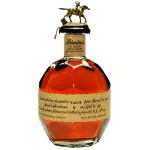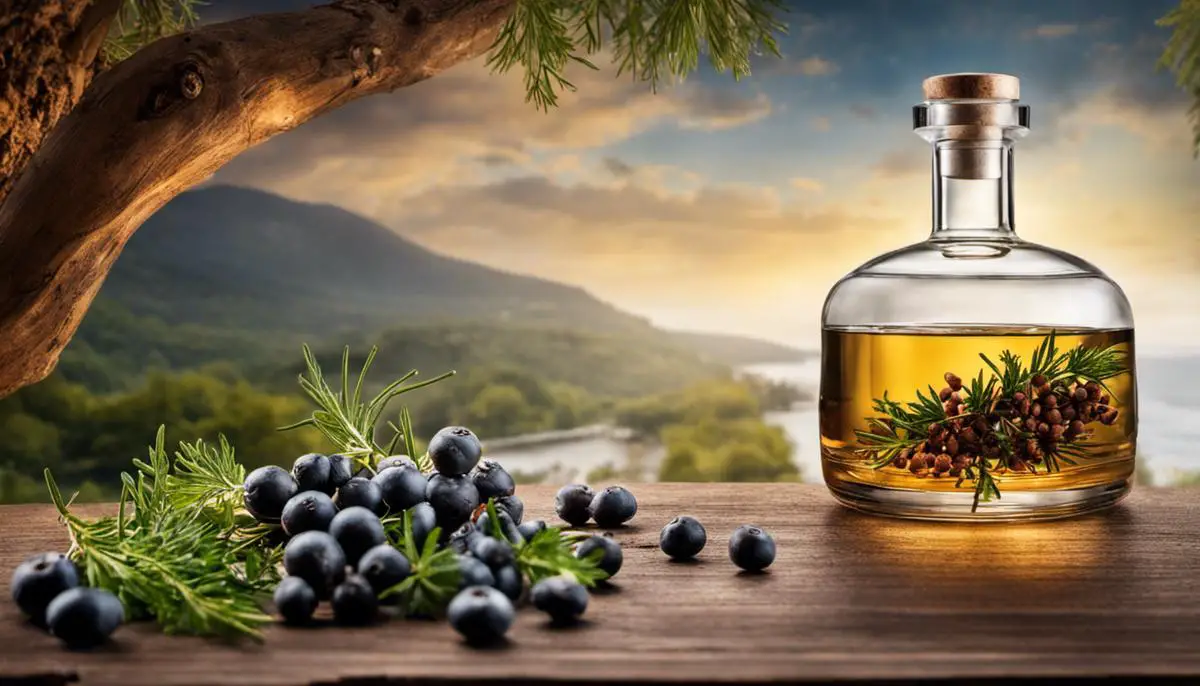Imbibing is most delightful when you understand what you’re sipping on, and when it comes to gin, garnishes can make a world of difference in your drinking experience. The unique and complex flavor profile of gin makes it a perfect candidate for experimentation with a variety of garnishes that not only delight the palate but also catch the eye. By exploring the botanicals used in gin and comprehending how they interact with different garnishes, you can enhance your gin’s flavor profile exponentially. This journey commences with an exploration of the classic garnishes, such as zesty lemon wedges, crisp cucumber slices, and tangy lime, which harmonize seamlessly with gin. But why stop there? Step into the abyss of excitement and discovery as we venture beyond the ordinary and into the world of unique garnishes.
Understanding the flavor profile of Gin
Understanding Gin’s Flavor Profile
To truly appreciate gin, you must understand its flavor profile. While most spirits are typically described in terms of their mouthfeel, gin’s diverse range of botanical ingredients contribute to the varied and complex tastes it presents. Juniper is the predominant flavor in gin, offering a bittersweet taste that often intertwines with earthy, grainy subtleties. If your gin has a more balanced and gentle flavor, it is likely to have a more diverse mix of botanicals which might include coriander, angelica root, and citrus peels. Cucumber, rose petals, green tea, and an array of spices may also potentially be used, according to the gin distiller’s creative preference.
Botanicals in Gin
Each gin recipe utilizes a unique combination of botanicals which transform the neutral grain spirit to a flavorful gin. This mix of botanicals is what sets one gin apart from another, offering diverse tastes and aromas. While juniper is a must for a spirit to be considered a gin, the secondary botanicals used, such as citrus peels, coriander seeds, angelica root, orris root, and many more, create variance in flavor. Botanicals can lend their flavors to gin in two ways, either through immersion or distillation. Both methods extract the essential oils from the botanicals, leading to the gin’s aroma and taste.
Interactions with Garnishes
Understanding how gin interacts with garnishes begins with understanding how garnishes complement or contrast the gin’s flavor. A wedge of lemon or lime can add a tangy acidity, cutting through the richness of the gin, while a sprig of herbs like rosemary, basil, or mint can enhance the botanical flavor profile. Similarly, a slice of cucumber can balance the gin’s robust nature. Some gins, in fact, have flavor profiles that specifically complement certain garnishes. For example, a floral gin might pair well with an edible flower, or a citrus-forward gin with a twist of citrus peel.
Enhancing Flavor with the Right Garnish
Identifying the best garnish for a particular gin is a combination of personal preference, creativity, and an understanding of the gin’s botanical mix. For gins with a heavy juniper influence, citrus garnishes work well. If your gin carries more floral or delicate aromas, a slice of apple or pear can highlight those flavors. Spiced gins, featuring botanicals such as cinnamon or cardamom, may pair well with a garnish of fresh cranberries or a cinnamon stick. Pay attention to the suggestions offered by the gin producer, as they often have ideal pairings in mind. Remember, the aim of a garnish is to either balance, complement or highlight the flavors in the gin.
Understanding and exploring gin’s flavor profile and the effect of garnishes can vastly enhance your overall gin drinking experience, offering nuanced layers of flavor and complexity. The wonderful world of gin opens up once you delve into the harmonious relationship between the gin and its garnish.

Exploring the classic options
Lemon Garnish for Gin
A lemon slice or twist is one of the most classic garnishes for your gin. It’s zesty aroma and slightly sweet flavor pair wonderfully with most gin profiles. To garnish with a lemon slice, simply slice a fresh lemon into thin rounds, then make a small cut from the edge to the center of the slice. Perch the lemon slice on the rim of your glass. If you prefer a lemon twist, cut a thin piece of lemon peel, then twist it to release its fragrant oils and drop in your gin.
Lime Garnish for Gin
Much like lemon, a lime garnish can add a fresh, zesty note to your gin. Given its slightly more bitter flavor, lime can be the perfect companion to a gin with stronger botanical flavors. You can either use a slice or a wedge of lime. Simply slice your lime, make a small slit in the middle and perch it on the edge of your glass. Alternatively, squeeze a lime wedge over your gin to infuse it with the juice before dropping it in.
Cucumber Garnish for Gin
Arguably, cucumber became a widely popular gin garnish due to the rise of Hendrick’s Gin, which recommends it as the perfect garnish. The cool and refreshing taste of the cucumber balances out the strong, aromatic notes of the gin. To garnish with a cucumber, you can either use cucumber slices or long ribbons. Simply cut a few thin rounds or use a vegetable peeler to create long thin ribbons, and add to your glass.
Experimentation: Mix and Match
Don’t be afraid to mix and match these common garnishes either. A slice of lemon and a couple of cucumber ribbons can add a sophisticated depth of flavor to your gin. Or, try combining the zesty lime with the cooling cucumber for a refreshing summer twist.
The Power of Aromatics
Keep in mind that garnishes are a powerful tool to enhance the aromatics of your gin. Whether you’re curating a gin experience for a gathering or simply enjoying a drink at home, adding the right garnish can help release the hidden notes in your gin, elevating your drink to new heights.
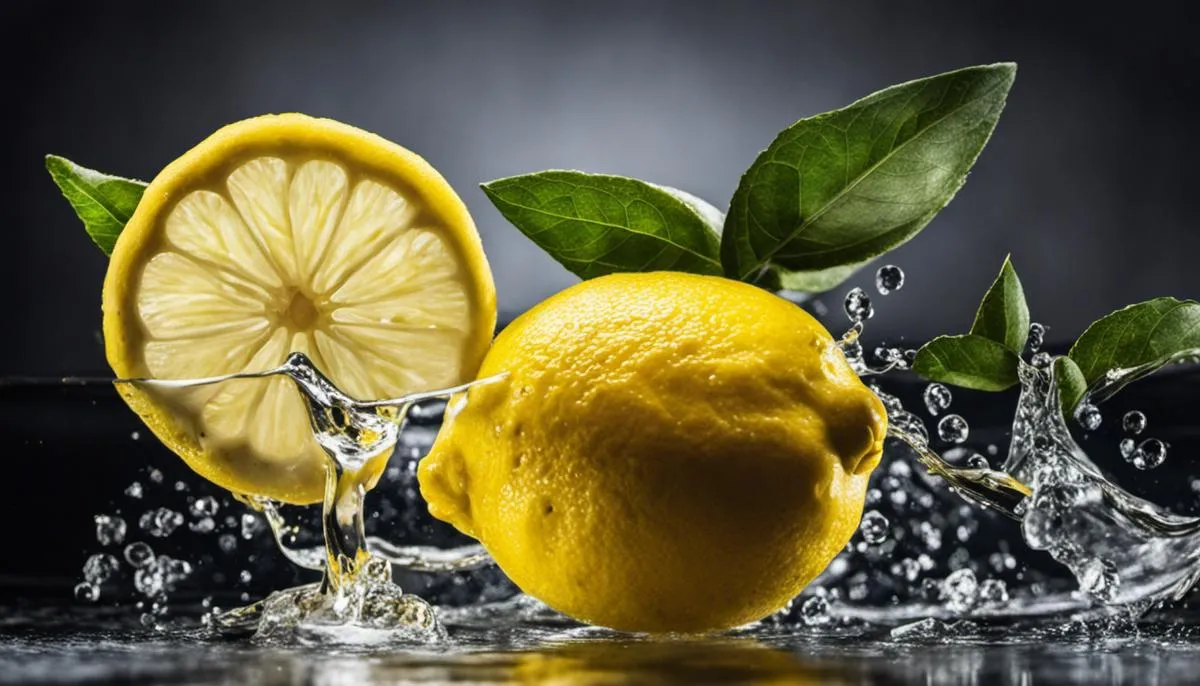
Experiment with unique garnishes
Exploring Fresh Herbs
Incorporating fresh herbs into your gin garnishes can bring a whole new layer of complexity to your drinks. For a more sophisticated twist, try using unique herbs like lavender, pineapple sage, or lovage. Crush the herb gently in your palm to release its aromas before placing it in your drink. If you’re feeling creative, you could also experiment with freezing herbs like basil, mint, or rosemary in ice cubes, adding an evolving flavor to your drink as the ice melts.
Experimenting with Exotic Fruits
If you’re fond of a little sweetness or tang to complement your gin’s botanicals, consider turning to the fruit bowl. Besides the traditional lemon or lime, you could opt for exotic fruits like lychee, passion fruit, or even dragon fruit. Skewered cherries could add a burst of color and flavor, while a slice of starfruit could offer an eye-catching garnish. For a refreshing summer garnish, try using cucumber or watermelon slices.
The Delicate Beauty of Edible Flowers
Edible flowers can add an elegant touch to your gin cocktails. With their beautiful colors and delicate flavors, they can take your garnishes from ordinary to extraordinary. Consider pansies for their vibrant hues, hibiscus for its sweet and tart flavor, or nasturtiums for their light peppery taste. Always remember to ensure that your flowers are free from pesticides and suitable for consumption.
Spicing it Up
To add heat or depth to your gin cocktails, spices could be your answer. Try garnishing your gin with a stick of cinnamon or a few cloves for a spiced undertone. Grate some fresh nutmeg over your cocktail for a warm and nutty flavor, or use a slice of fresh ginger to add a hint of spice and a pleasant aroma.
Adding Citrus Zest
A twist or curl of citrus zest can add a pop of color and a burst of bright, refreshing flavor. Consider using a peeler or zester to create long, thin ribbons of zest from lemons, oranges, or grapefruits. To release the essential oils, twist the zest over your drink and rub it along the rim of the glass before dropping it in.
Of course, the best garnish is the one that enhances your gin’s natural flavors and suits your taste preferences. Don’t be afraid to experiment until you find your ideal combination.
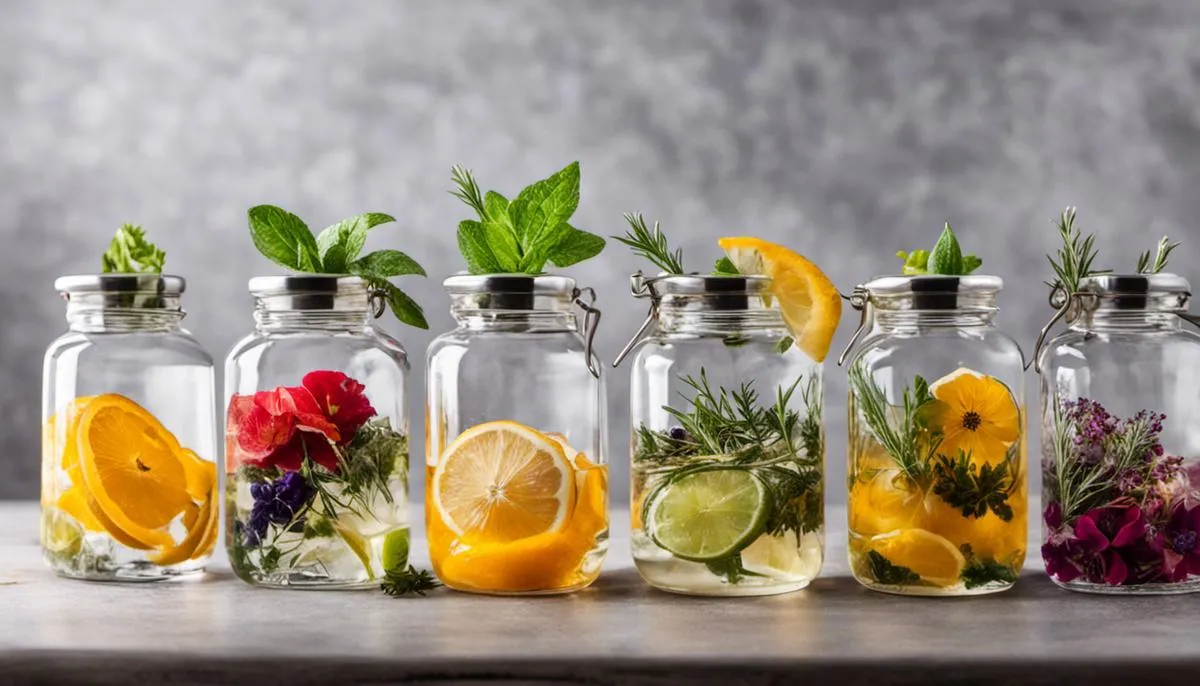
Mixology basics
Understanding Mixology Ratios
Understanding the mixology ratio is crucial for making the perfect gin drink. Generally, the standard is a ratio of 2:1:1, which means two parts of the main spirit (in this case, gin), one part of sour (like lemon or lime juice), and one part of sweet (like sugar syrup or honey). Some mixologists prefer a 3:2:1 ratio for a stronger cocktail. It’s all about personal preference. However, always start with the basic 2:1:1 ratio and adjust to satisfy your taste.
Choosing the Right Glassware
Choosing the right glassware can do as much for your gin cocktail as the right garnish. A tall, slender highball glass shows off an effervescent gin and tonic, while a wide-mouthed copa glass allows the botanicals in the gin and the aromas of the garnish to shine. Small cocktail glasses, like the classic martini glass, are perfect for gin martinis and other strong, straight-up gin cocktails. Always remember, the glass should complement and enhance the characteristics of the gin drink.
Perfecting Presentation with Garnish
Garnish isn’t just a decor—it’s an art that can add significant dimensions to your gin cocktail.
- Citrus Rinds: Citrus rinds like lemon or lime are classics. They perfectly brighten the gin’s botanicals and give a refreshing aroma. Twist a long, thin piece of rind and drop it in or around the rim of the glass.
- Basil: Basil and gin are a match made in heaven. The sweet, peppery notes of fresh basil leaves complement gin perfectly. Simply clap a leaf between your hands to release the aromatic oils and pop it in.
- Berries: Consider adding some summer freshness to your gin drinks with sweet, ripe berries. They can be muddled at the bottom of the glass or floated on top.
- Rosemary: This aromatic herb is a sublime match for gin. Its piney scent contrasts beautifully with the botanicals in gin. Make sure to smack a sprig of rosemary before inserting it in to release the essential oils for more pungent aroma.
- Cucumber: In cocktails, cucumber provides a fresh, clean, and subtle flavor that pairs amazingly well with gin. Either peel long, thin strips to twist into the glass or cut into discs and float them.
- Edible Flowers: They can make any classic gin cocktail look pretty and delicate. They add a subtle flavor and a wonderful aroma too.
Try experimenting with different garnishes to find your favorite. Remember, the best gin garnish doesn’t just add beauty—it contributes to the overall flavor, aroma, and experience of the drink.
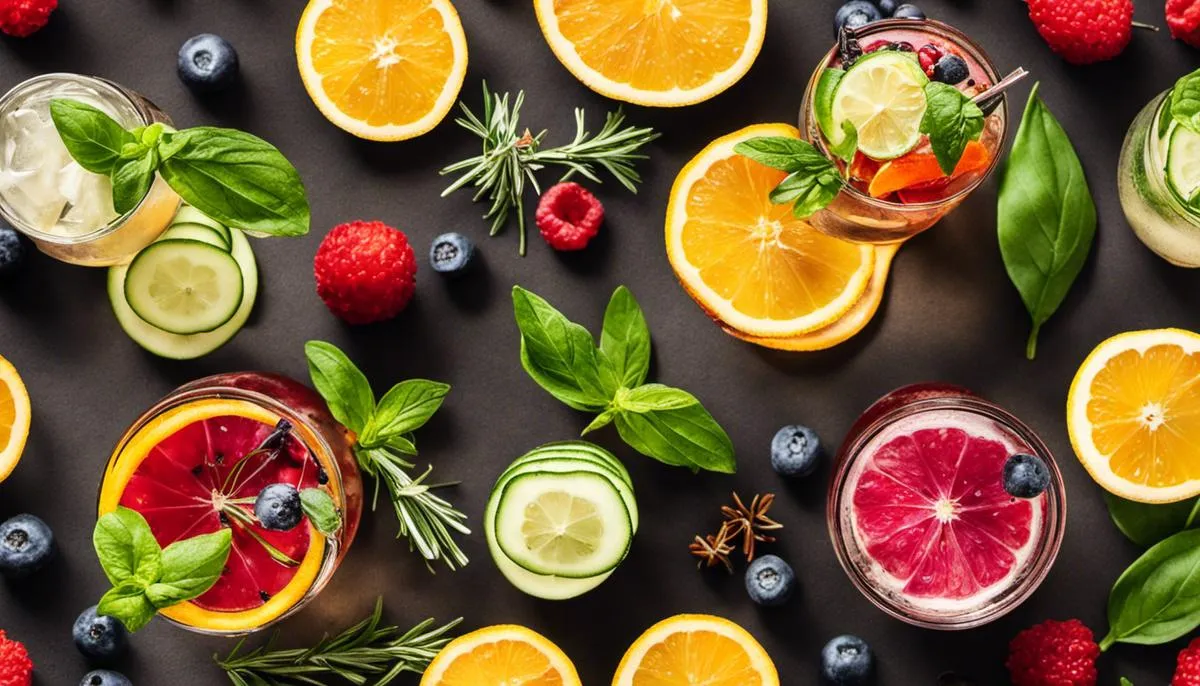
Finally, the art of mixology is not just about combining spirits and garnishes, but also the understanding of ratios, selecting suitable glassware, and mastering the art of presentation. As you delve deeper into this fascinating world, you’ll find yourself viewing a humble glass of gin in a totally new light. From complementing the subtle pine of juniper berries with a fresh sprig of rosemary, to balancing the dryness with a slice of sweet pear, the right garnish can transform your gin into a symphony of flavors. Never underestimate the power of a well-chosen garnish, for it can be the secret ingredient that takes your gin from ordinary to extraordinary. Here’s to a world of refined sipping and elevated experiences!

